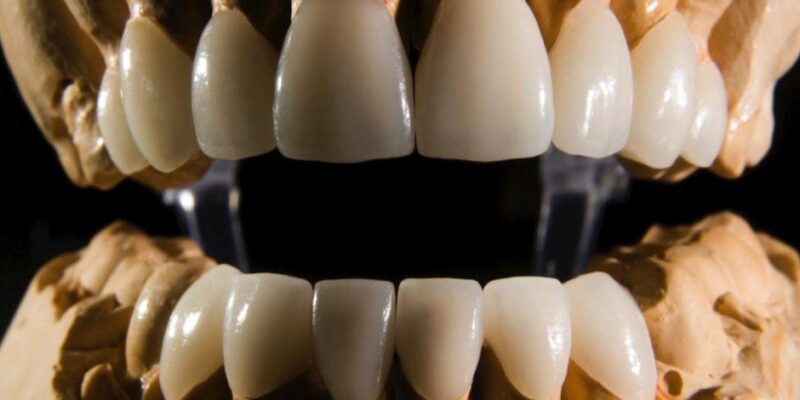Researchers have finally succeeded in developing an artificial enamel that is superior to natural enamel in both strength and durability.
This hardest tissue in the human body is tough enough to resist dents, yet elastic enough not to crack during decades of jaw smashing. But, the human body cannot regenerate enamel as the cells generating enamel are destroyed immediately after the eruption of the tooth. So researchers have long been working in generating artificial enamel which is comparable to natural tooth enamel.
This has got many applications beyond dentistry i.e creating body armor to strengthen or harden surfaces for floors or cars, daily protection of delicate electronic chips in laptops to large-scale applications like designing building materials that could resist earthquake damage.
Mimicking enamel structure is tricky because of its nested modes, similar to wool fibers spun into yarn and then knitted into a cable-knit sweater. To mimic enamel – calcium, phosphorus, and oxygen atoms must come together to form crystalline wires in a complex, repeating pattern, which later receives a magnesium-rich coating around those wires and undergoes further weaving.
In previous experiments, scientists could not mimic the complex structural organization required to create enamel’s elasticity and hardness. The structure of parallel wires in this new study is a little closer to true enamel than previous attempts although not completely weaving into the complex 3D architecture of natural enamel.
In the new study, scientists used extreme temperatures to coax the wires into an orderly formation. As with earlier construction of artificial enamels, the team built its new material from wires of hydroxyapatite—the same mineral that makes up real enamel. But unlike in most other synthetic enamels, the researchers encased the wires in a malleable metal-based coating.
This metal-based coating is responsible for making this enamel so resilient. The magnesium coating of natural enamel was here replaced by zirconium oxide, which is extremely strong and still nontoxic. This makes it very less likely to snap.
When they pitted artificial enamel against natural tooth enamel on these tests, they found the lab-grown version outperformed its natural counterpart in six different areas, including its elasticity and ability to absorb vibrations.
Extensive studies on how this artificial enamel bonds to natural enamel – a crucial requirement for tooth repair is required before it can be successfully applied to clinical dentistry. Furthermore, one needs to heat the raw materials to 300˚C, then freeze them carefully before cutting them into shape with a diamond saw – nearly impossible to accomplish in most dentist offices.
Source: Science.org




















Comments